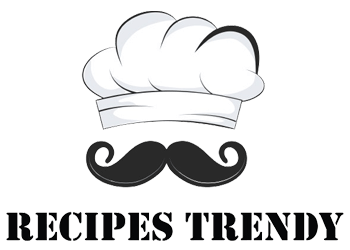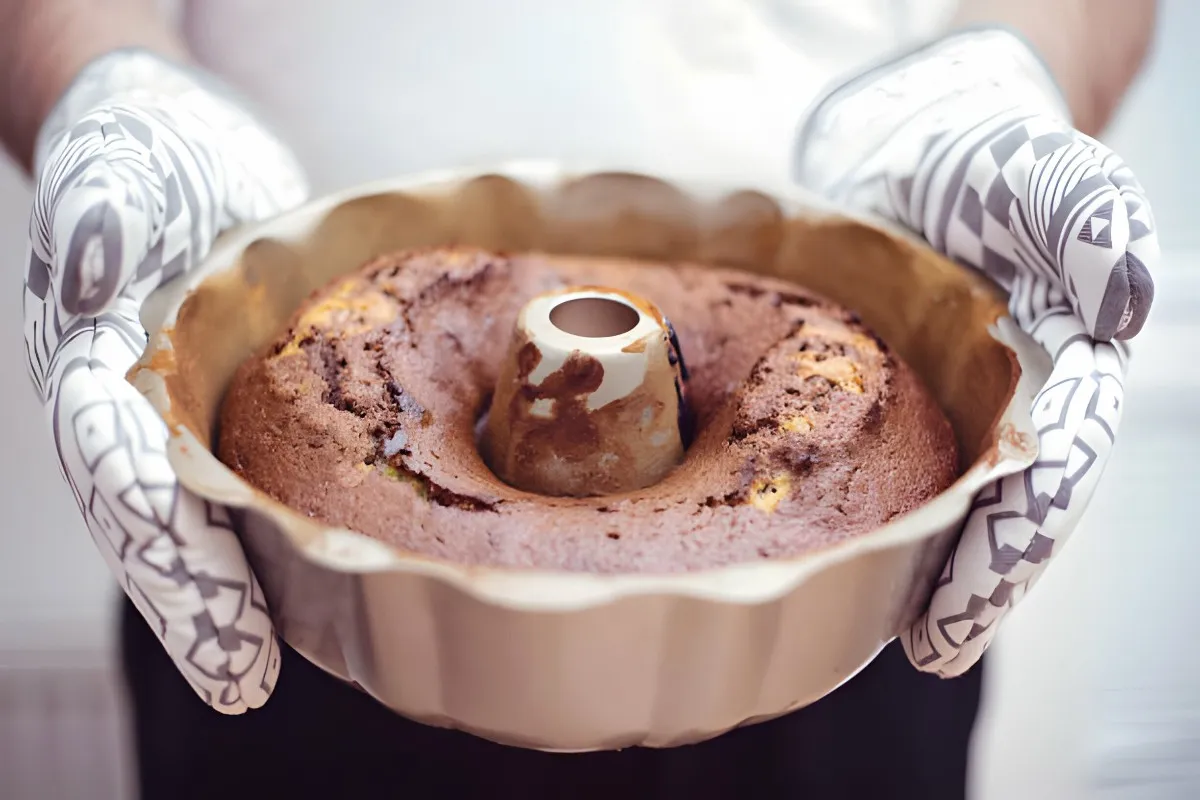In the world of baking, every pan has a story to tell, and the Bundt cake pan is no exception. Its distinctive design and ability to transform a simple cake into a masterpiece make it a favorite among bakers worldwide. But what exactly is the point of a Bundt cake pan?
What makes it stand out from the rest? Why do certain cakes come out better when they’re baked in this unique pan? We’re set to explore the world of Bundt cake pans, from their rich history to the types of cakes that excel in them.
Whether you’re a seasoned baker or just starting out, this article is your ultimate guide. Dive in as we uncover the art of Bundt cake baking, ensuring you master every aspect of this iconic kitchenware.
Introduction to Bundt Cake Pans
The Origins of the Bundt Cake Pan: A Historical Insight
Once upon a time, in the mid-20th century, the Bundt cake pan made its grand entrance into the baking scene, courtesy of Nordic Ware, a company that patented the design. This wasn’t just any old cake pan; it was a revelation. What is the point of a Bundt cake pan, you might ask? Beyond its aesthetics, the Bundt pan changed how cakes were baked more evenly, thanks to its unique shape.
Distinctive Features: What Sets the Bundt Cake Pan Apart
The Bundt cake pan is a marvel of design. Its most notable feature is the central tube or “chimney,” which ensures that heat is distributed evenly throughout the cake. This means no more doughy centers or overcooked edges – just perfect, moist cake every time. And let’s not forget about the pan’s fluted sides, which are not just for show. They add surface area to the cake, allowing for more of that delicious crust that we all love. Plus, the intricate designs make for a cake that’s as beautiful as it is tasty. Curious about what is so special about Bundt cake? Discover the unique qualities that make it a favorite among bakers.
So, what is the point of a Bundt cake pan? It’s simple, really. This pan takes the cake (pun intended) when it comes to versatility, beauty, and the ability to produce an evenly baked, moist cake. Many bakers wonder if can you put any type of cake in a Bundt pan; this comprehensive guide answers that question and more. Whether you’re whipping up a rich pound cake, a delicate coffee cake, or even a savory dish, the Bundt pan is your go-to kitchen companion. Stay tuned as we delve deeper into the wonders of Bundt cake baking, sharing tips, tricks, and recipes that will make your next baking adventure a piece of cake!
Why Bundt Cake Pans are Essential in Baking
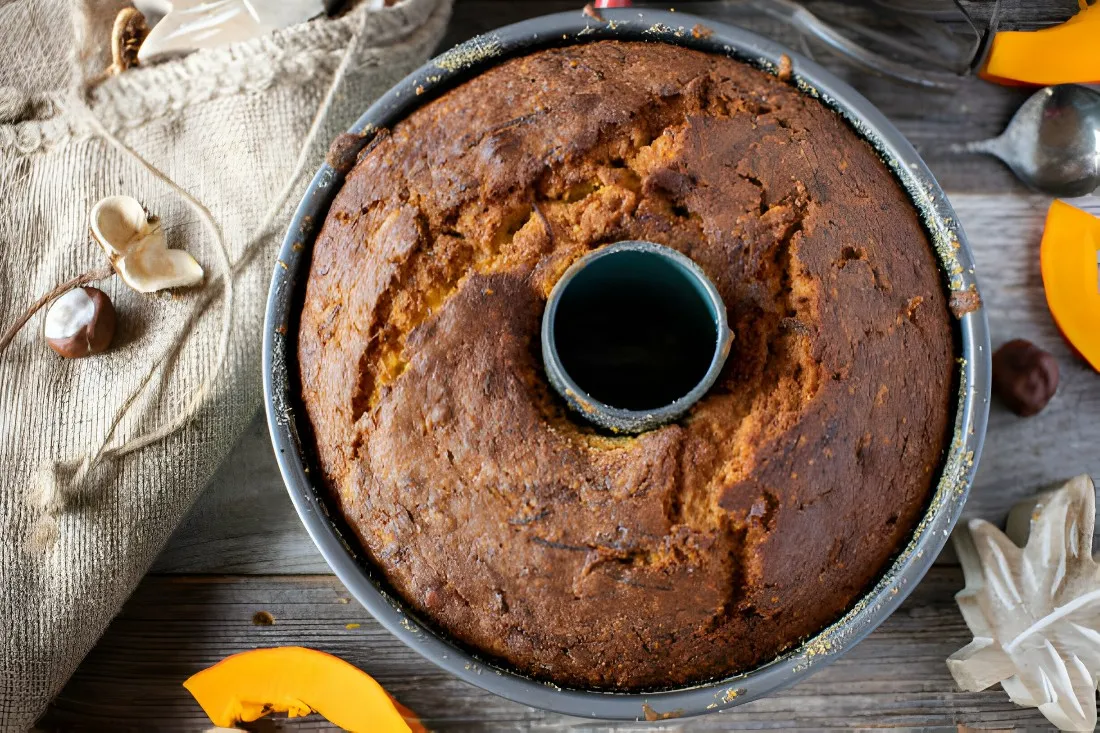
Why Use a Bundt Pan for Baking?
Ever wondered what is the point of a Bundt cake pan when your grandma insisted on using that old, intricately designed Bundt pan for her legendary pound cake? Well, it turns out, she was onto something. The Bundt cake pan isn’t just another pretty face in the kitchen; it’s a baking powerhouse. The secret lies in its design. The central tube, or chimney, allows hot air to circulate freely through the center of the cake, ensuring it cooks evenly from the center outwards. This means no more undercooked middles or burnt edges, just perfect, golden-brown deliciousness every time.
Moreover, the pan’s fluted sides do more than just create a beautiful pattern. They increase the surface area of the cake that’s exposed to heat, leading to a better crust and, let’s be honest, who doesn’t love that slightly crispy edge on a slice of cake? It’s these unique features that answer what is the point of a Bundt cake pan and make it a must-have for any baker looking to elevate their cake game.
Comparing Bundt Pans with Other Cake Pans
Bundt Pan vs. Regular Round Cake Pan
At first glance, it might seem like any cake pan could do the job. But, when you pit a Bundt cake pan against a regular round cake pan, the differences become clear. A regular pan might give you a decent cake, but it lacks the central tube of the Bundt pan, which is crucial for even baking. Plus, a regular pan doesn’t offer the same aesthetic appeal that comes with the Bundt’s fluted design, further highlighting what is the point of a Bundt cake pan.
Bundt Pan vs. Angel Food Cake Pan
Now, you might think, “What about the angel food cake pan? It has a central tube.” True, but there’s a catch. Angel food cake pans are designed with smooth sides to support the delicate structure of angel food cake as it climbs the sides of the pan. The Bundt pan, with its intricate designs, is all about adding texture and beauty to denser cakes, like pound cakes or coffee cakes. Each pan serves a unique purpose, tailored to the type of cake you’re baking, underscoring what is the point of a Bundt cake pan in providing versatility and beauty to your baking endeavors.
Types of Cakes Best Suited for Bundt Pans
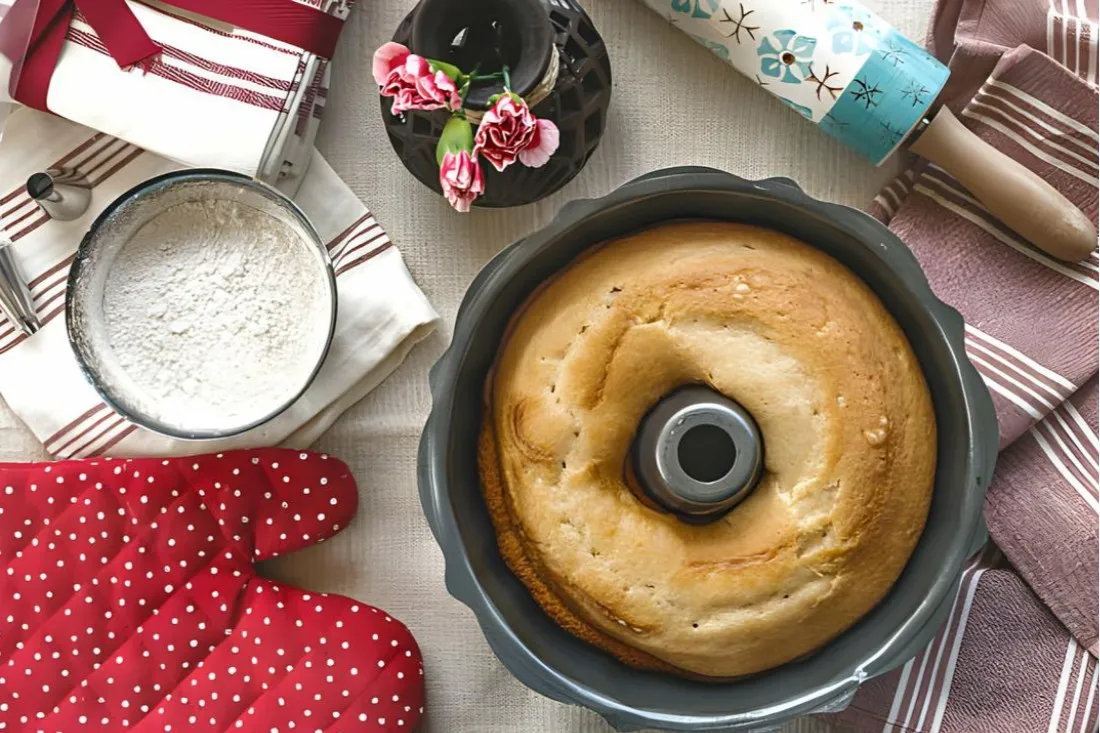
Ideal Cakes for Bundt Pans
When it comes to Bundt pans, not all cakes are created equal. The unique design of the Bundt cake pan makes it particularly well-suited for certain types of cakes. Let’s dive into the kinds of cakes that truly shine when baked in a Bundt pan.
Pound Cakes
The dense and moist nature of pound cakes makes them a perfect match for Bundt pans. The even heat distribution ensures that these heavy batters cook thoroughly without drying out or burning. Plus, the intricate designs of Bundt pans add an elegant touch to the simple, classic pound cake, turning it into a centerpiece-worthy dessert.
Coffee Cakes
Coffee cakes, with their tender crumb and often a swirl of cinnamon or fruit, come out beautifully when baked in a Bundt pan. The pan’s design not only adds visual appeal but also helps to cook the cake evenly, ensuring that every slice is as moist and delicious as the last.
Yeast-based Cakes
Yeast-based cakes, like the traditional European Gugelhupf, benefit greatly from the Bundt pan’s design. The central tube allows for even heat distribution, which is crucial for the proper rise and baking of yeast doughs. These cakes often come out with a golden crust and a perfectly tender interior, thanks to the unique properties of the Bundt pan.
Adapting Recipes for the Bundt Cake Pan
While Bundt pans can elevate the presentation and texture of your cakes, they may require some recipe adjustments. Here are a few tips to ensure your Bundt cake success:
- Adjusting Recipes for Bundt Pans: Not all cake recipes are designed for Bundt pans. You may need to increase the amount of batter to fill the pan properly or adjust baking times and temperatures to account for the pan’s unique heat distribution.
- Tips for Perfect Bundt Cakes: Always thoroughly grease and flour your Bundt pan, paying special attention to the crevices in the design to prevent sticking. Consider using a baking spray with flour for an even coat. And remember, patience is key—let the cake cool in the pan for about 10 minutes before attempting to invert it onto a cooling rack.
Bundt pans are not just for looks; they’re a tool that, when used correctly, can produce some of the most delicious and beautiful cakes. Whether you’re a fan of rich pound cakes, moist coffee cakes, or airy yeast-based cakes, the Bundt pan is your ally in the kitchen.
Tips and Tricks for Using Bundt Pans
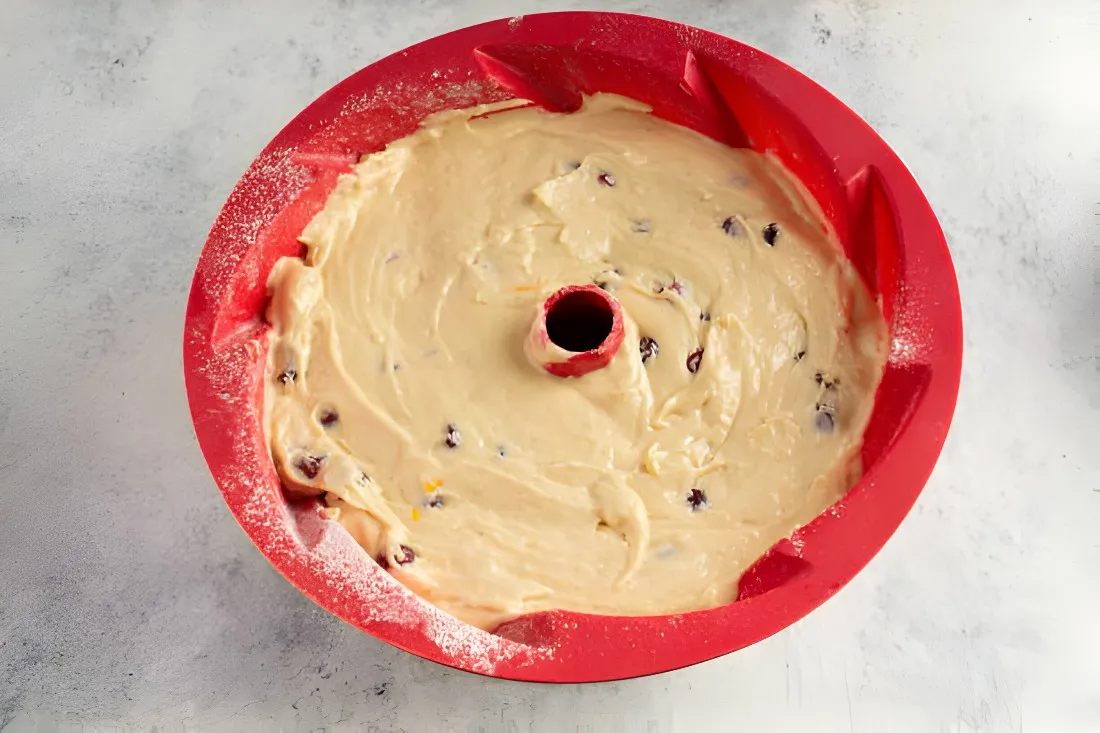
Maximizing Your Bundt Cake Pan’s Potential
To get the most out of your Bundt cake pan, it’s not just about choosing the right cake recipe. There are techniques and tips that can help ensure your Bundt cake is as beautiful to look at as it is delicious to eat. Let’s explore some of these strategies.
Greasing and Flouring Techniques
One of the cardinal rules of Bundt cake baking is to properly grease and flour your pan. This is crucial because of the intricate designs on Bundt pans that can make cake removal a bit tricky. For best results, use a pastry brush to apply softened butter or shortening to every nook and cranny of the pan, then dust it with flour to cover all greased surfaces. Alternatively, a baking spray with flour can be a real time-saver and equally effective.
Cooling and Inverting Cakes
Patience is a virtue, especially when it comes to Bundt cakes. After baking, allow your cake to cool in the pan on a wire rack for about 10 minutes. This helps the cake to set and detach from the pan’s sides. When it’s time to invert, place a cooling rack over the pan, flip it, and gently tap the bottom of the pan. If you’ve greased and floured the pan correctly, your cake should release smoothly.
Troubleshooting Common Issues
Even with the best preparation, sometimes things don’t go as planned. Here are solutions to some common Bundt cake baking issues:
Preventing Cakes from Sticking
If your cake sticks despite greasing and flouring, it might be time to check your pan’s condition. Non-stick surfaces can wear over time, making them less effective. Applying a baking spray with flour right before pouring in the batter can also help. For stubborn pans, consider using a silicone Bundt pan as an alternative.
Ensuring Even Baking
Uneven baking can result from various factors, including oven hot spots and batter consistency. To combat this, rotate your cake halfway through baking if you know your oven bakes unevenly. Also, make sure your batter is evenly distributed in the pan before baking to promote uniform rising and cooking.
By mastering these tips and tricks, you’ll be well on your way to creating Bundt cakes that are not only delicious but also visually stunning. Remember, every baker encounters a hiccup now and then, but it’s all part of the journey to perfection.
FAQs
Bundt cake pans, with their unique shape and design, often lead to questions from both novice and experienced bakers alike. Here, we address some of the most frequently asked questions, providing clarity and guidance to ensure your Bundt baking adventures are smooth sailing.
Can I bake a regular cake in a Bundt pan?
Absolutely! While Bundt cake pans are often associated with specific recipes like pound or coffee cakes, you can certainly use them for regular cake recipes. However, keep in mind that you may need to adjust the baking time. Due to the pan’s design, cakes might bake faster or slower than in a traditional round or square pan. Always insert a skewer or toothpick into the thickest part of the cake to check for doneness.
How do I convert a regular cake recipe for a Bundt pan?
Converting a regular cake recipe for a Bundt pan is straightforward but requires a bit of adjustment. First, ensure your recipe has enough batter to fill the Bundt pan about two-thirds to three-quarters full. If it’s too little, your cake won’t have the iconic Bundt shape; too much, and you risk it overflowing. Adjust baking times as well, as the central tube of the Bundt pan can lead to quicker baking. Start checking for doneness a bit earlier than the recipe suggests.
How to properly clean and maintain a Bundt pan?
Cleaning and maintaining a Bundt pan, especially those with intricate designs, can be a bit of a challenge. After each use, soak the pan in warm, soapy water to loosen any stuck-on bits. Use a soft brush or sponge to clean the crevices without scratching the surface. Avoid using metal utensils or abrasive cleaners that can damage the non-stick coating. To maintain the pan’s integrity, store it in a dry place and avoid stacking heavy items on top that could warp its shape.
By addressing these common queries, we hope to demystify the process of baking with Bundt pans, making it more accessible and enjoyable for bakers everywhere. With the right techniques and a bit of practice, you’ll find that Bundt pans are a versatile and invaluable addition to your baking repertoire.
conclusion
As we conclude our journey through the world of Bundt cake pans, it’s evident that they’re more than just tools for baking. They unlock creativity, refine baking skills, and add elegance to simple recipes. We’ve covered the Bundt pan’s history, design, and the best cakes for it. This exploration highlights why Bundt baking is cherished worldwide.
We’ve shared tips and tricks for using Bundt pans, aiming for both beauty and perfection in baking. Addressing common questions and challenges has provided you with solutions for smoother baking experiences. Throughout, the Bundt cake pan has proven to be a joy for both new and seasoned bakers.
In essence, the Bundt cake pan embodies culinary creativity and passion. It’s an ally whether you’re making a moist pound cake, a delicate coffee cake, or trying new recipes. So, get your pan ready, set your oven, and embark on creating stunning, delicious cakes. Happy baking!
